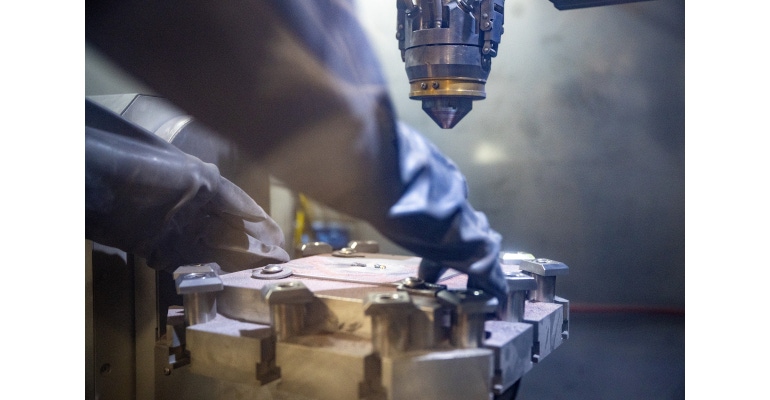Simulated Martian Dust Used to Preview 3D Printing on Mars
Researchers aim to discover how additive manufacturing can be used in space to support astronaut missions to the red planet.
November 2, 2022

Combining a small amount of a synthetic material aimed at mimicking dust found on Mars with a titanium alloy creates a high-performance 3D-printing material that could be used to 3D print objects in space, researchers have found. A team from Washington State University used a black, powdery substance called Martian regolith—which is meant to simulate the rocky, inorganic material found on the Mars surface—to explore options for 3D-printing tools, rocket parts, or other useful items that might one day be needed on space missions, they said.
What researchers found is that pairing a small amount of the simulated rock with a titanium alloy could create strong parts, they said. Meanwhile using a material composed 100 percent of Martian regolith in printing created more brittle parts that cracked easily but that still could be useful for creating coatings to protect equipment from rust or radiation damage, said Amit Bandyopadhyay, a professor in WSU's School of Mechanical and Materials Engineering and one of the researchers on the project.
The research ultimately shows how scientists and astronauts on a future potential Mars mission might be able to use additive manufacturing to support and facilitate their work while in space, he said.
“In space, 3D printing is something that has to happen if we want to think of a manned mission because we really cannot carry everything from here,” Bandyopadhyay said in a press release. “And if we forgot something, we cannot come back to get it.”
Bandyopadhyay and his team first demonstrated how 3D printing in space could work in 2011, when they used the process to manufacture parts from lunar regolith, or simulated crushed moon rock, for NASA.
Solving a Cost Issue
One of the reasons for such work is that bringing materials into space can be extremely expensive. For instance, it costs about $54,000 for the NASA space shuttle to put just one kilogram of payload, or about 2.2 pounds, into Earth orbit, according to the researchers. Thus, if astronauts and scientists can actually make parts for equipment or other items that they need on their missions in space, it could greatly reduce the financial burden—as well as the actual weight of the craft.
It would also mean that if some crucial bit of equipment breaks in space, they could create a new part for it or somehow otherwise repair it on site, researchers said.
Bandyopadhyay and his team's earlier work with lunar regolith was the springboard for the latest study, in which they used a powder-based 3D printer to mix the simulated Martian rock dust with a titanium alloy, a metal often used in aerospace production for its strength and heat-resistant properties.
The 3D Printing Process
The process entails using a high-powered laser to heat the materials to more than 2,000 degrees Celsius, or 3,632 Fahrenheit, which results in a melted mix of Martian regolith-ceramic and metal. The material then flowed onto a moving platform that allowed researchers to create different sizes and shapes to simulate potential parts or objects for use in space.
Once the material cooled down, researchers were able to test it for strength and durability. They found that ceramic material made from 100% Martian rock dust cracked as it cooled. This, as Bandyopadhyay noted, could be used to create coatings.
Objects that used a mixture composed of 5 percent regolith, however, exhibited properties that were more high-performance than even using the titanium alloy alone, researchers said. This means that scientists can use the material to make lighter-weight pieces that could still bear heavy loads, they said. “It gives you a better, higher strength and hardness material, so that can perform significantly better in some applications,” Bandyopadhyay said.
Researchers published a paper on their work in the journal International Journal of Applied Ceramic Technology.
The team plans to continue their work to create other composites using different metals and 3D-printing techniques. This could yield even stronger or more durable materials that can be used for 3D-printing various objects and parts in space, Bandyopadhyay said.
“This establishes that it is possible, and maybe we should think in this direction because it’s not just making plastic parts which are weak but metal-ceramic composite parts which are strong and can be used for any kind of structural parts,” he said.
About the Author(s)
You May Also Like



